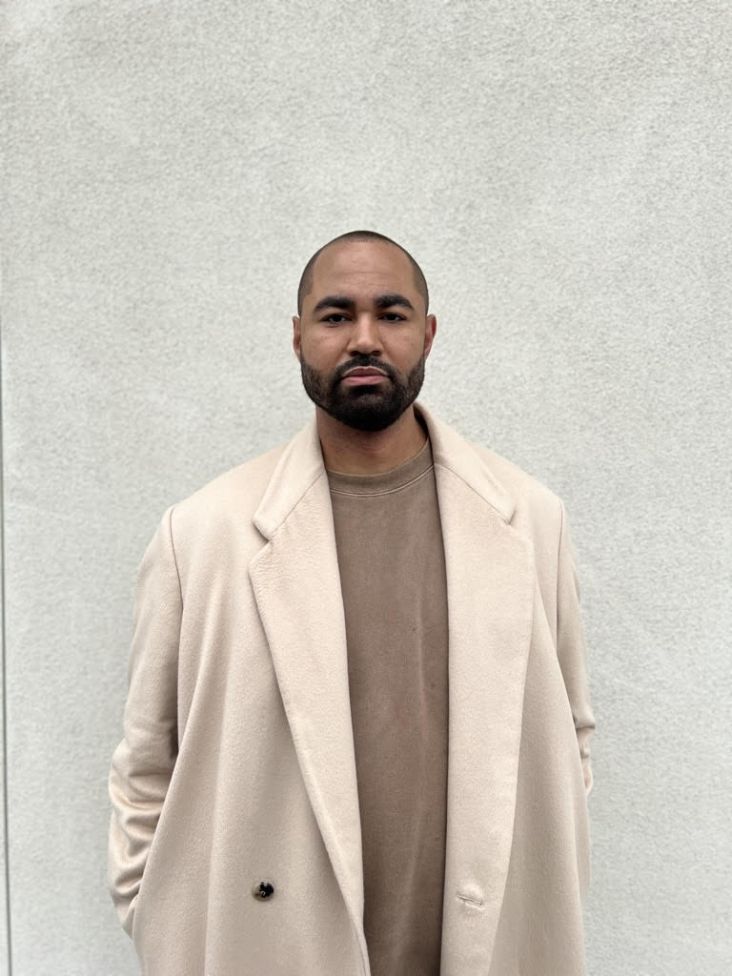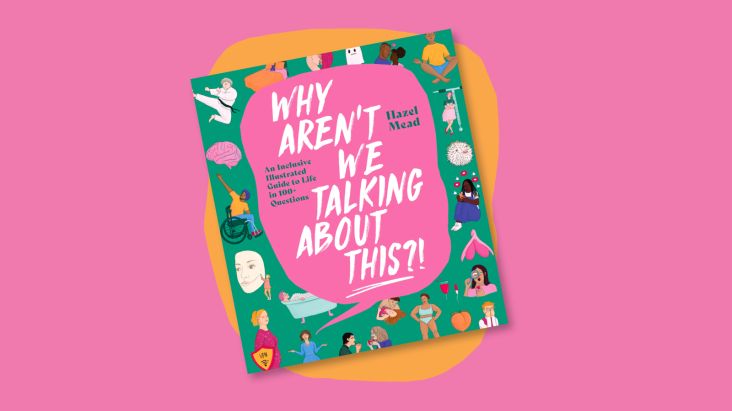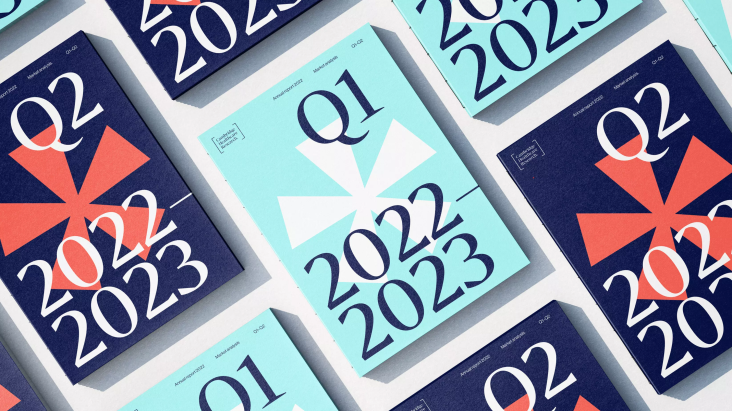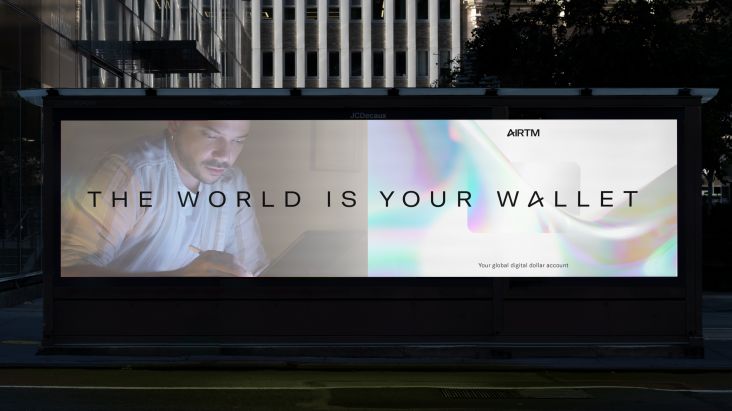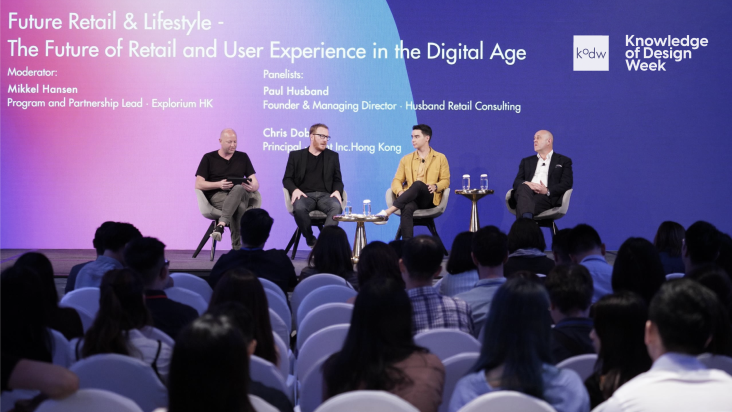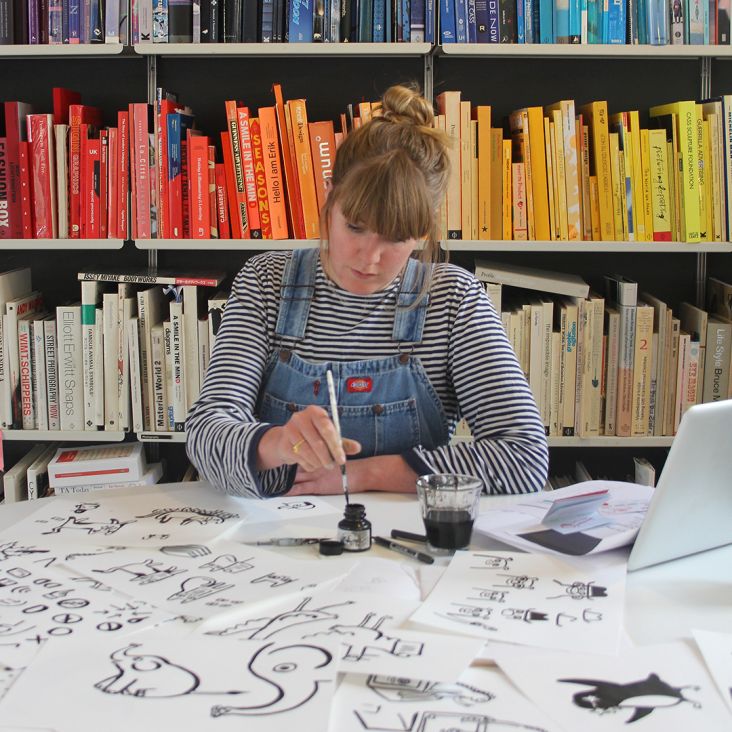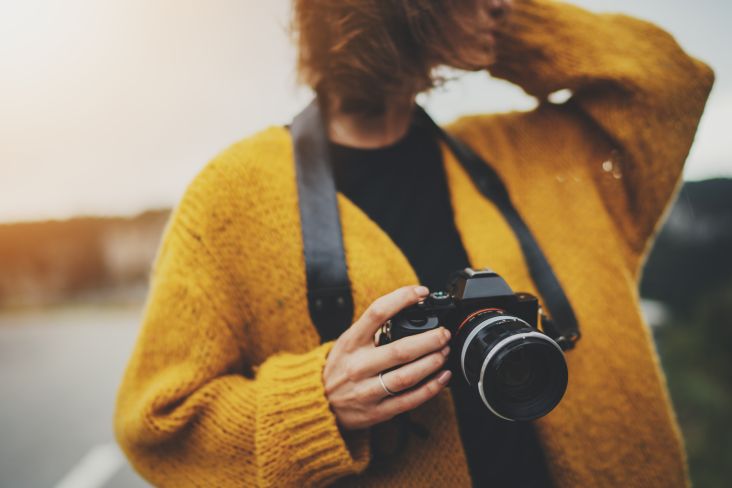Celebrity photographer Chris Floyd shares six pieces of career advice everyone can learn from
You don't have to work with a camera to learn from world-class photographer Chris Floyd's success. We chat with him about the importance of persistence, why you should trust your instincts, and why relationships are so important.
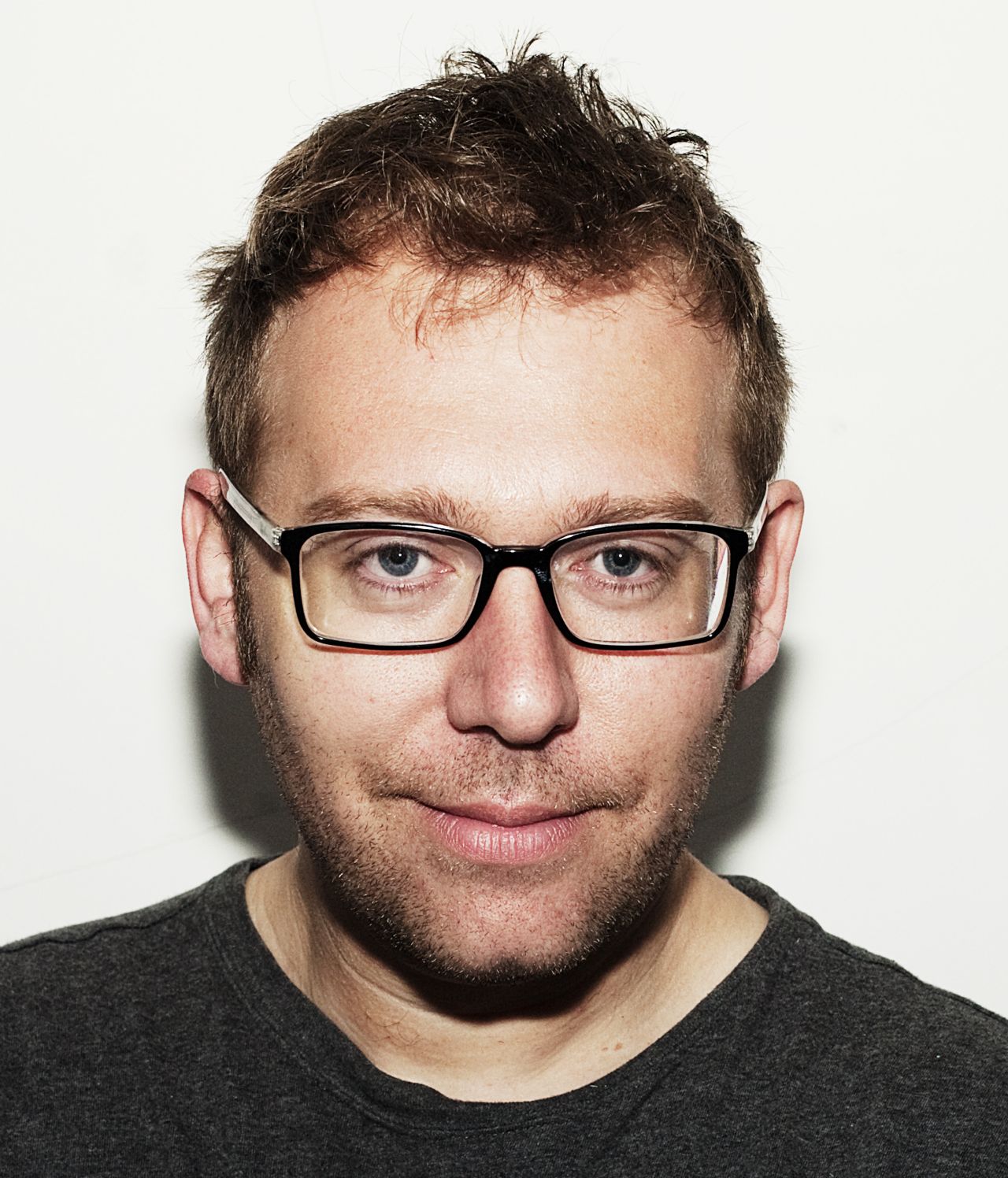
Chris Floyd
You may not have heard of British photographer and filmmaker Chris Floyd, but you've almost certainly seen his work – especially if you were young in the 1990s when he began his career in celebrity portraiture with some of the leading lights of the Britpop scene.
Over the years, he's shot everyone from David Bowie and Paul McCartney to The Duke and Duchess of Cambridge on their tenth wedding anniversary. And in 2022, he brought his favourite pictures together in his first monograph, Not Just Pictures, along with 60 pieces of written text that tell the stories behind them.
Selected several times for the Taylor Wessing Portrait Prize and American Photography, Chris's work has been published in Vogue, The New York Times, The Sunday Times Magazine, Esquire, GQ, Conde Nast Traveller, The New Yorker, Harper's Bazaar and Rolling Stone. He's also worked as a photographer with big brands, including Apple, British Airways, Philips, Sony, The National Lottery, and Virgin Radio, and done moving image work for BMW, Nissan, Sleaford Mods and The Smithsonian, to name but a few.
Yet he didn't have the most promising start in life. "At school, I got five O-levels, then dropped out of my A-levels after two terms," he recalls. "I just wasn't academic and had a really terrible attention span. School wasn't inspiring, and I'm not that social; I'm quite shy."
So we were eager to chat with Chris and find out how he got where he is today. Read on as we reveal six things he's discovered during his own career, which every creative can learn from today.
1. Be persistent
After leaving school, Chris decided he wanted to be a magazine photographer. In that pre-internet era, popular titles sold in their millions and had enormous financial and cultural power. "I wanted to do the sort of stuff people put on their bedroom walls," he recalls. At the time, though, so did thousands of others. So realising his dream, Chris explains, was largely a matter of persistence.
"I'd pick up the magazine, and inside I'd find the names of the staff: the editor, art director, picture editor and all that. And I'd just ring them up and say: 'I'm a photographer; can I come and see you?'. Obviously, I'd get fobbed off loads: people didn't want to spend all day seeing young photographers. But I just persisted. They'd say: I'm a bit busy now; call tomorrow. Call me later. Call me next week. Or just don't call me ever again. Then finally, I'd get an appointment and show them my work. And people would always say quite nice things, but they'd always be really non-committal."
](https://www.creativeboom.com/upload/articles/69/692ccbf771f5b7414f11b3dd583a6fe6e204fcce_944.jpg)
Oasis © Chris Floyd – Not Just Pictures, published by R|A|P www.reelartpress.com
](https://www.creativeboom.com/upload/articles/dc/dc53432a3cfaa196ad30952387e27c9de5297ad3_944.jpg)
Bill Murray © Chris Floyd – Not Just Pictures, published by R|A|P www.reelartpress.com
But Chris wasn't perturbed. "I'd just say: 'Okay, well, I'm going to do some more work; when I've got some new things to show you, can I come and see you again?' And they'd always say yes. So often, I'd see people three, four, five, six times over, across 18 months or even two years."
It all sounds stressful, but eventually, it paid off. In mid-1993, Chris got his first commission for an influential music magazine called Select. "It was a one-page thing with the comic duo Reeves and Mortimer, along with the journalist Miranda Sawyer," Chris remembers. We met at Westminster Pier, then took the riverboat to Greenwich, to the Cutty Sark and took some pictures there."
It was Chris's first big break and the direct result of his persistence. "I'd been to see the art editor, I reckon, at least four times," he recalls. "And I remember exactly where I was when he called me because I had only just got a mobile. I was in Marks & Spencer buying socks, and he called me to say: 'Can you do a job for us?' And it was the greatest feeling in the world."
2. Don't say no when you can say yes
Getting your first freelance gig is one thing. But once you start getting more and more commissions, some jobs can seem like they're not worth your while. Don't dismiss requests too quickly, though, says Chris. Because sometimes a job that seems small can turn into something much bigger.
An example from his early career was a job for the 1990s 'lad mag' Loaded. "It was Graham Lambert from the Britpop band Inspiral Carpets and Graeme Le Saux, a footballer who played for Chelsea. They were really good friends and both into 1950s cars; Ford Anglia, Triumph Heralds, and things like that.
](https://www.creativeboom.com/upload/articles/eb/eb9cb4386d02a81291f67f9ce39b6fb46c4d1904_944.jpg)
Marcus Rashford © Chris Floyd – Not Just Pictures, published by R|A|P www.reelartpress.com
](https://www.creativeboom.com/upload/articles/63/63ebba3922cac2051271ba315b65c71e3e9ce8f8_944.jpg)
Aisling Bea © Chris Floyd – Not Just Pictures, published by R|A|P www.reelartpress.com
"Now the Inspiral Carpets were signed to Mute Records, and the press officer – a woman called Angie – came with me on the train to Oldham. And that opened the door to all kinds of craziness. Because two or three years after, Angie became the marketing director of Sony Music. And she got me loads of really big jobs. So that one little day out to Oldham introduced me to a person who later gave me a lot of opportunities just because we got on."
3. You don't need charm; you need purpose
The last story points to how important in the creative business it is to get on with people. But Chris stresses that you don't have to be super-charming to succeed. It's more about being nice to people and doing a good job.
"Personally, I'm not that social," he points out. "I'm quite shy and not particularly chatty, normally. But having the camera allowed me to be this other person. It kind of makes your presence, your existence legitimate. It legitimises your reason to be in the room. So if I go to a party and meet someone I've photographed, I don't really know what to say; I'm a bit awkward. But when I've got the camera in my hand, I've got a purpose and reason to be there. And I can just chat away all day long. But without the camera, I'm sort of a bit reticent."
](https://www.creativeboom.com/upload/articles/29/2966c2f880b91bf905bf7b8cecb1f09a8d959a59_944.jpg)
Blondie © Chris Floyd – Not Just Pictures, published by R|A|P www.reelartpress.com
](https://www.creativeboom.com/upload/articles/7d/7dd63aeaf689f99a10f7393dbcc0bf638dba168f_944.jpg)
David Attenborough © Chris Floyd – Not Just Pictures, published by R|A|P www.reelartpress.com
In contrast, when he's working, he feels like he's on stage. "It's my stage time. I'm the entertainment and the act, and my portrait subject is the audience. So the thing I say to young photographers and students is that you have to do whatever you can to hold their attention. Because if you photograph Paul McCartney, this is not interesting for him.
"He's met a million of me. And I've never met any of him. So there's this massive imbalance in the relationship, and you have to find something else to counteract that. And all you've got is your personality. So if you can make yourself even remotely 10% more interesting or charismatic, or make them curious about you, then you have a hold over them."
In a way, he says, it's like flirting. "You've got to find a way for them to be attracted to you, to stay relaxed for five minutes longer. It's also about making them feel connected to you. So you must puff yourself up and become more than you actually are."
4. Follow your instinct until it "sounds right"
Charming a photographic subject, just like any form of creative collaboration, is much easier if you know what you're doing and can focus on creating great work. But how do you know if something is working?
For Chris, it's largely about instinct. "I'm just trying to get something that feels right," he explains. "You know, some things just sound right or feel right, or taste right, even if you can't pinpoint what that is."
He gives the example of a time he was shooting superstar DJ Mark Ronson. "But there was something about it that wasn't right. He said, 'What's the matter?' And I told him, 'I don't know, it just doesn't sound right.' That's just the way it came out of my mouth. 'It doesn't sound right.' And he sort of looked at me like, 'What do you mean, sound?'.
"Then, I made a little small change to the lighting. I put a very pale yellow gel over the light that made the light just a bit warm, a bit more yellow, to warm his skin and make it a bit less pasty. And then it suddenly all fell into place, with this small yellow gel on the light. And I said: 'Yeah, that's what didn't sound right: the colour of the light wasn't quite right'."
](https://www.creativeboom.com/upload/articles/d0/d027daf3d5b91de97f1d6f35098ae47705969e62_944.jpg)
Mark Ronson © Chris Floyd – Not Just Pictures, published by R|A|P www.reelartpress.com
"And then he said, 'Oh, I get you, I get you. Sometimes it makes the difference between a terrible-sounding snare drum and an amazing-sounding snare drum if I just put a piece of tissue paper on it. So that's what I mean. It's like herbs and spices. A really good chef will just go: 'Oh, it just needs a bit of cinnamon'."
5. Be an artisan, not an artist
It's unsurprising to hear Chris using a food metaphor because one of the photography subjects he most clicked with was Anthony Bourdain, the celebrity chef, author, and travel documentarian who sadly died in 2018. "I wouldn't say we became friends, but we always had a really good time together," Chris recalls. "I really enjoyed his company, and I think he enjoyed mine. I think the reason for that is because, like me, he was a journeyman, an artisan, not an artist. And he saw the same thing in me. What he was doing with food, I was doing with a camera."
It's an interesting point in an era when almost every creative person, whether they craft graphic designs or brew coffee, seems to describe themselves as artists. But not all of us are meant to change the world; some are just meant to do something and do it well. And Chris stresses that you shouldn't shy away from that but be proud of it and own it.
](https://www.creativeboom.com/upload/articles/b0/b02de7a6cfd18474f129452c219e686b4391ae05_944.jpg)
Anthony Bourdain © Chris Floyd – Not Just Pictures, published by R|A|P www.reelartpress.com
"Artisan isn't a dirty word," he says. It's just that so much more weight is given to people who call themselves artists rather than artisans. A guy came around my house this morning who will build me some shelves. And what he can do, to me, is amazing. I can't do what he does. And I watch him do it and just think: 'How do you do that?'"
6. Avoid doing anything generic
Over his career, Chris has witnessed huge technological change and adapted accordingly. But tech never sits still for long. And in 2023, he's keenly aware of the threat that photorealistic AI poses to photographers' livelihoods.
His conclusion for anyone trying to start out as a photographer, or indeed anyone working as a creative, is pretty straightforward. "I think that anything generic is fucked now," he says. "Anything where a client thinks: 'We need a picture of a woman who is eating a salad', say, or 'laughing with a laptop'. If it's not a specific person, it's just a representation of an idea; they can just do that now in AI."
](https://www.creativeboom.com/upload/articles/70/70949baa6fa52e0ab13bd792075972ba87e3e478_944.jpg)
David Bowie © Chris Floyd – Not Just Pictures, published by R|A|P www.reelartpress.com
](https://www.creativeboom.com/upload/articles/f8/f81db9ad414739378452ca20c894529e67e7510e_944.jpg)
Tina Fey © Chris Floyd – Not Just Pictures, published by R|A|P www.reelartpress.com
What AI can't do, though, is send somebody with personality and experience out on a shoot to charm a difficult celebrity. "So for anything like that, when you've got a specific subject, you need a human," he points out. "For instance, I recently worked as a filmmaker at Château Lafite, a wine estate in Bordeaux, France, owned by the Rothschilds since 1868. We interviewed the current family member who runs it, a woman called Saskia de Rothschild. Something where you've got a specific person in a specific place with a specific subject matter. And you can't do that in AI."
Chris Floyd – Not Just Pictures is published by Reel Art Press. RRP £49.95/$69.95. For further information and full list of stockists visit www.reelartpress.com. To learn more about Chris Floyd, go to Chrisfloyd.com and follow him @chrisfloyd.

 for Creative Boom](https://www.creativeboom.com/upload/articles/06/063686a9a3b095b9b1f0e95df917ed4bd342be1b_732.jpg)



 using <a href="https://www.ohnotype.co/fonts/obviously" target="_blank">Obviously</a> by Oh No Type Co., Art Director, Brand & Creative—Spotify](https://www.creativeboom.com/upload/articles/6e/6ed31eddc26fa563f213fc76d6993dab9231ffe4_732.jpg)
 by Tüpokompanii](https://www.creativeboom.com/upload/articles/58/58684538770fb5b428dc1882f7a732f153500153_732.jpg)








